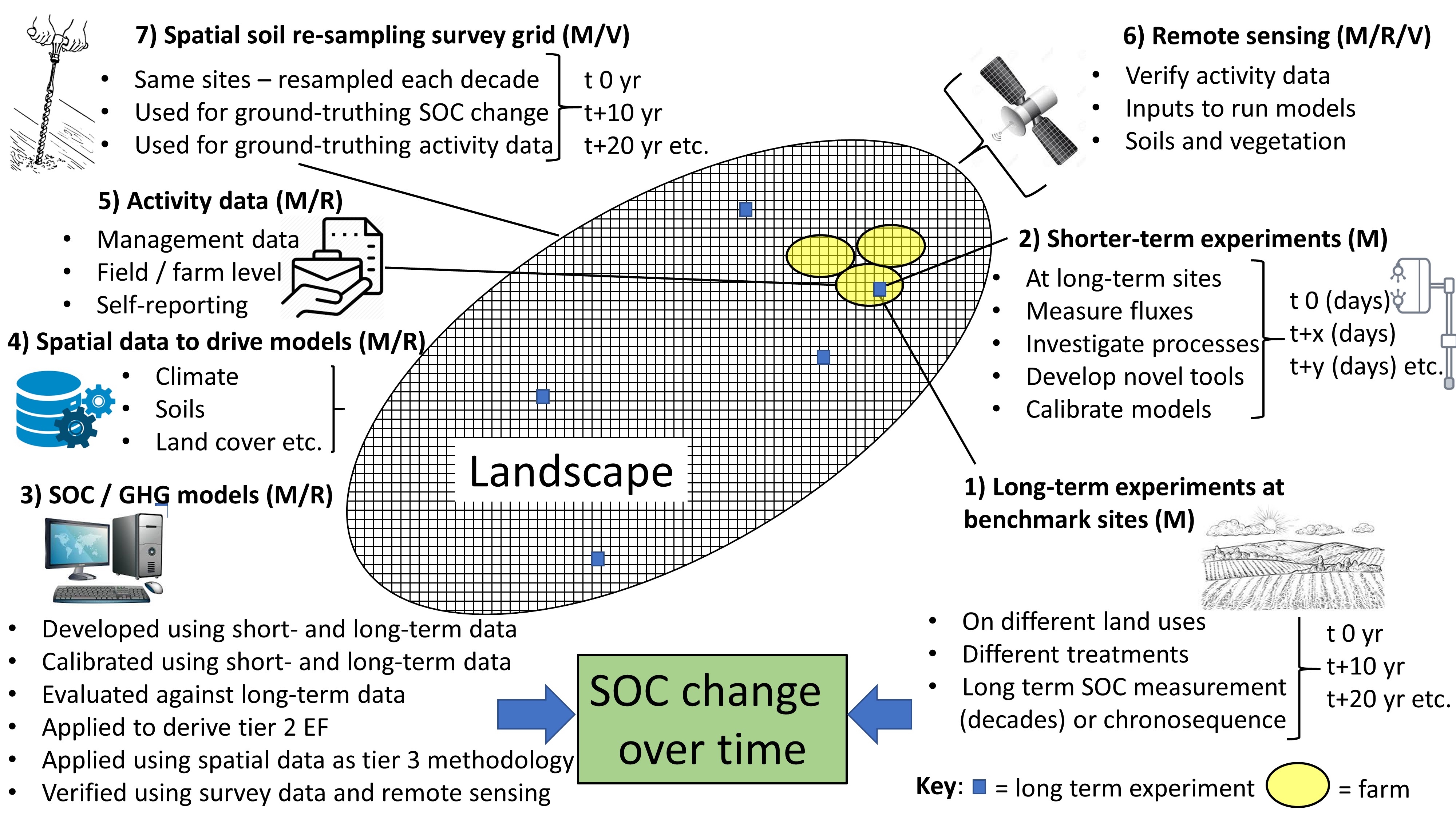Authors: Pete Smith1, Jean-Francois Soussana2, Denis Angers3, Louis Schipper4, Claire Chenu5, Daniel P. Rasse6, Niels H. Batjes7, Fenny van Egmond7, Stephen McNeill8, Matthias Kuhnert1, Cristina Arias-Navarro2, Jorgen E. Olesen9, Ngonidzashe Chirinda10, Dario Fornara11, Eva Wollenberg12, Jorge Álvaro-Fuentes13, Alberto Sanz-Cobena14, Katja Klumpp15
Full citation: Smith, P., Soussana, J. F., Angers, D., Schipper, L., Chenu, C., Rasse, D. P., … & Arias‐Navarro, C. (2019). How to measure, report and verify soil carbon change to realize the potential of soil carbon sequestration for atmospheric greenhouse gas removal. Global change biology.
Abstract: One proposed option for removal of carbon dioxide from the atmosphere is by increasing the amount of carbon retained in the soil organic matter, an option known as soil organic carbon sequestration. Given that soils already contain a lot of carbon, and changes in soil organic carbon are slow, it is difficult to measure increases in soil carbon against the large background soil carbon stock. Because of this difficulty in measuring changes in soil organic carbon, a key barrier to implementing programmes to increase soil organic carbon is the need for credible and reliable measurement/monitoring, reporting and verification platforms. We review methods for measuring soil organic carbon change directly in soils, we examine novel developments for quantifying soil organic carbon change, and describe how surveys, long-term experiments and chronosequences (sites of different ages with changes at various stages of carbon gain) can be used for testing models and as benchmark sites in global frameworks to estimate soil organic carbon change. We review measurement/monitoring, reporting and verification platforms for soil organic carbon change already in use and describe a new vision for a global framework for measurement/monitoring, reporting and verification platform of soil organic carbon change. The proposed platform builds on existing repeat soil surveys, long-term experiments, remote sensing, modelling and novel measurement methods and could be applied at national, regional or global scales.

Read Smith et al.’s full paper in Global Change Biology.
Author affiliations:
1 Institute of Biological & Environmental Sciences, University of Aberdeen, 23 St Machar Drive, Aberdeen, AB24 3UU, UK
2 INRA, 147 rue de l’Université 75338 Paris Cedex 07, France
3 Agriculture and Agri-Food Canada, 2560 Hochelaga Blvd Quebec, Quebec G1V 2J3, Canada
4 Environmental Research Institute, University of Waikato, Hamilton, Private Bag 3105, Hamilton 3240, New Zealand
5 INRA, AgroParisTech. Bât. EGER F- 78850 Thiverval-Grignon, France
6 Norwegian Institute of Bioeconomy Research (NIBIO), Høgskoleveien 7, 1433 Ås, Norway
7 ISRIC – World Soil Information, Droevendaalsesteeg 3. 6708PB Wageningen, The Netherlands
8 Manaaki Whenua – Landcare Research, PO Box 69040, Lincoln, New Zealand
9 Department of Agroecology, Aarhus University, Blichers Allé 20, Tjele, Denmark
10 International Center for Tropical Agriculture (CIAT), A.A. 6713, Cali, Colombia
11 Agri-Food and Biosciences Institute, Belfast, Northern Ireland, Newforge Lane, BT9 5PX, Belfast, UK
12 CGIAR CCAFS Programme, University of Vermont (UVM), Burlington, VT 05405, USA
13 Soil and Water Department, Spanish National Research Council (CSIC) PO Box 13034, 50080 Zaragoza, Spain
14 Research Center for the Management of Environmental and Agricultural Risks (CEIGRAM), Universidad Politécnica de Madrid, Madrid 28040, Spain
15 INRA, VetAgro-Sup, UCA, Ecosystème Prairial, Clermont Ferrand, France
